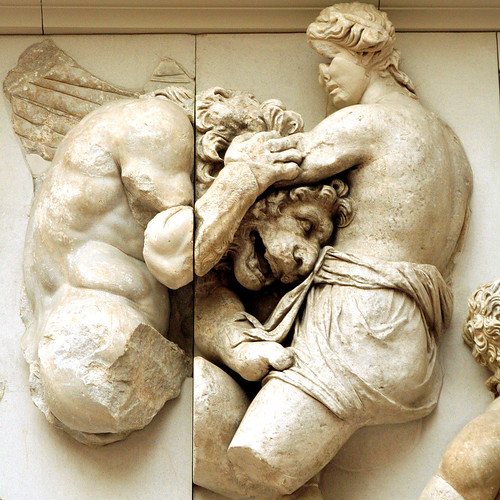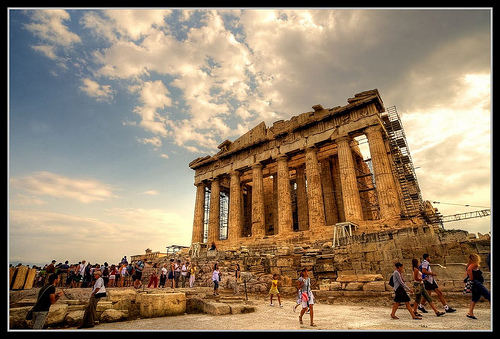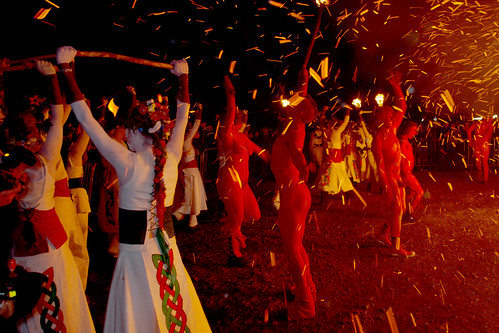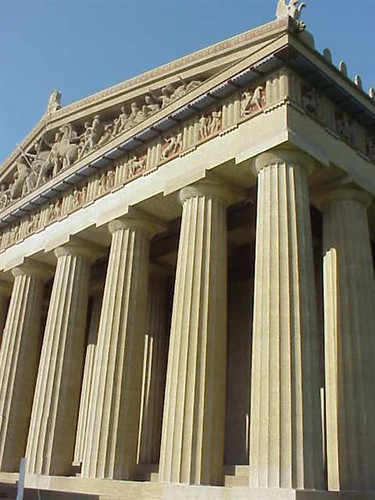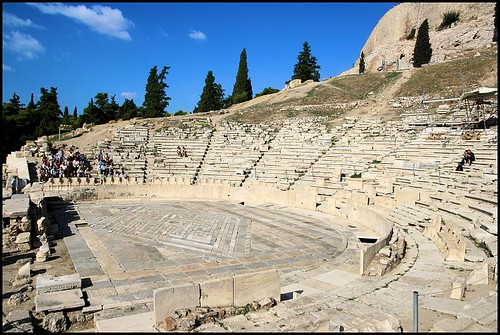The New Acropolis Museum is arguably the most high-profile building to go up this decade (since we in New York are still peering into a big hole in the ground that is supposed to produce a new World Trade Centre). Essentially a smack in the face of the British Museum’s argument that Athens has no suitable venue in which to house the Elgin Marbles, it’s also the most controversial. I spoke to Bernard Tschumi, the outspoken architect who designed this extraordinary building. Replacing the smaller old Acropolis Museum, the purpose-built new museum ensures that architectural treasures too delicate to be…
-
-
‘Myrtis‘ has attracted thousands of people across Greece to see her, has appealed to the world leaders to end the spread of disease and now she earns herself a place amongst historic artefacts in the National Archaeological Museum in Athens. All this, and her name isn’t actually Myrtis. It was the name that was given to her by scientists who uncovered her remains, as well as over 150 other skeletons, from an archaeological dig of a ‘plague grave’ at Kerameikos Cemetery dating back between 426-430BC, as reported by ana-mpa. Myrtis’ resurrection some 2,500 years after her death from Typhoid –…
-
Both of these monumental pieces of sculpture are beautiful, both portray good overcoming evil and the greatness of civilised man over barbarians. The Parthenon itself is awe-inspiring. If you haven’t managed to see it yet (a perfect opportunity for a holiday in Athens!), when you get up to the Acropolis and walk around, look at the Parthenon frieze, the pediments, the metopes, and then you should get ready to pick your jaw up off the floor! It is honestly one of the most magical buildings that I have ever seen. Everything about it proclaims the glory of Athens – it’s…
-
Attribution: Lluís Sala Athens Greece Key Dates The first Parthenon on the site dated back to 570 BC. The existing Parthenon was built between 447 and 438 BC to replace Parthenon II. In the 5th century it was transformed into a church, before becoming a mosque under Turkish rule in the 1460s. The building was attacked and almost destroyed in 1687 during Morozini’s siege of the Acropolis. Lord Elgin caused more damage when he looted it in the 19th century, subsequently selling much of its contents to the British Museum. The Parthenon underwent restoration from 1896-1900 and from 1922-1933. A…
-
Tomorrow, a happy collection of hippies, druids and general revellers will climb up Calton Hill in Edinburgh to celebrate the ancient festival of Beltane. In my experience, the festival is a positive, celebratory, and quite spectacular event with near-naked hippies sporting all-over body paint and leaves and dancing around fires, drinking warm cans of cider. There are drums hundreds of them, practically making the whole hilltop vibrate and hypnotic chanting. Revellers express their joy and drunkenness much in the same way as they do at Hogmanay by dancing around on the spot outdoors, and kissing passing strangers. Its a good…
-
The cast and crew of Percy Jackson and the Olympians: The Lightning Thief didn’t have to go all the way to Athens to film the hydra scene in the Parthenon. They just booked some time in a reconstruction of the Parthenon in Nashville, Tennesse. Perhaps in the future, as the role of CGI increases in movies, they will be able to use a virtual version. I visited the Nashville Parthenon, as well as Second Life’s virtual reconstruction, to find out what the Parthenon of Athens was really like in the time of the ancient Greeks. The Nashville Parthenon I know,…
-
The Greek City-state, or Polis, is arguably the greatest political system ever created – remarkable given its appearance some 2800 years ago. The Greeks successfully built a system to foster those most elusive of human desires – freedom and equality, and their efforts have had an influence on western thinking since the Hellenic culture was re-discovered during the Middle Ages. But the Polis was much more than a governmental system. It was a culture built around expansion of the human intellect – through philosophy, architecture, drama, and mathematics. The Polis was the engine of these accomplishments because it valued and…
-
Bergama, Turkey is a city in the west of the country, located near the Bakray river and is home to the ruins of the Roman city of Pergamon (or Pergamum), which lie to the north and west of the modern day site. The ancient city is believed to have had a population of around 150,000 people at its peak in the First Century AD. Thanks to GeoEye who have provided a high resolution satellite image of the region, we can see the relationship between the modern city and its ancient past. Of all the amazing sites in the area surrounding…
-
The ‘birthplace of drama’ – the Theatre of Dionysus, located on the south slope of the Acropolis – is to be partially restored in a 6 million project that is set for completion in 2015. The ancient open-air theatre in Athens saw the premire of many of the great dramatic works written during the ‘golden age’ of Greek Tragedy. Famous ancient playwrights – such as Aeschylus, Euripides, Sophocles and Aristophanes – took part in competitions staged twice yearly at the Dionysus theatre; the City Dionysia festival during the spring and the Lenaia in wintertime. The limestone and marble version of…
-
Thirty years in the making, the 130 million euro New Acropolis Museum is a stunning, if controversial, addition to Athen’s famous architectural landscape and at the same time a provocative statement of intent by the Greek people. In a fascinating talk in Dublin last night, Professor Dimitrios Pandermalis, President of the new museum took an enthralled audience on a tour of the history, architecture and intentions of the spectacular building. The talk, entitled ‘Collections Present and Absent at the New Acropolis Museum, Athens‘ was hosted by the National Museum of Ireland, organised by the Irish Museums Association and was attended…



